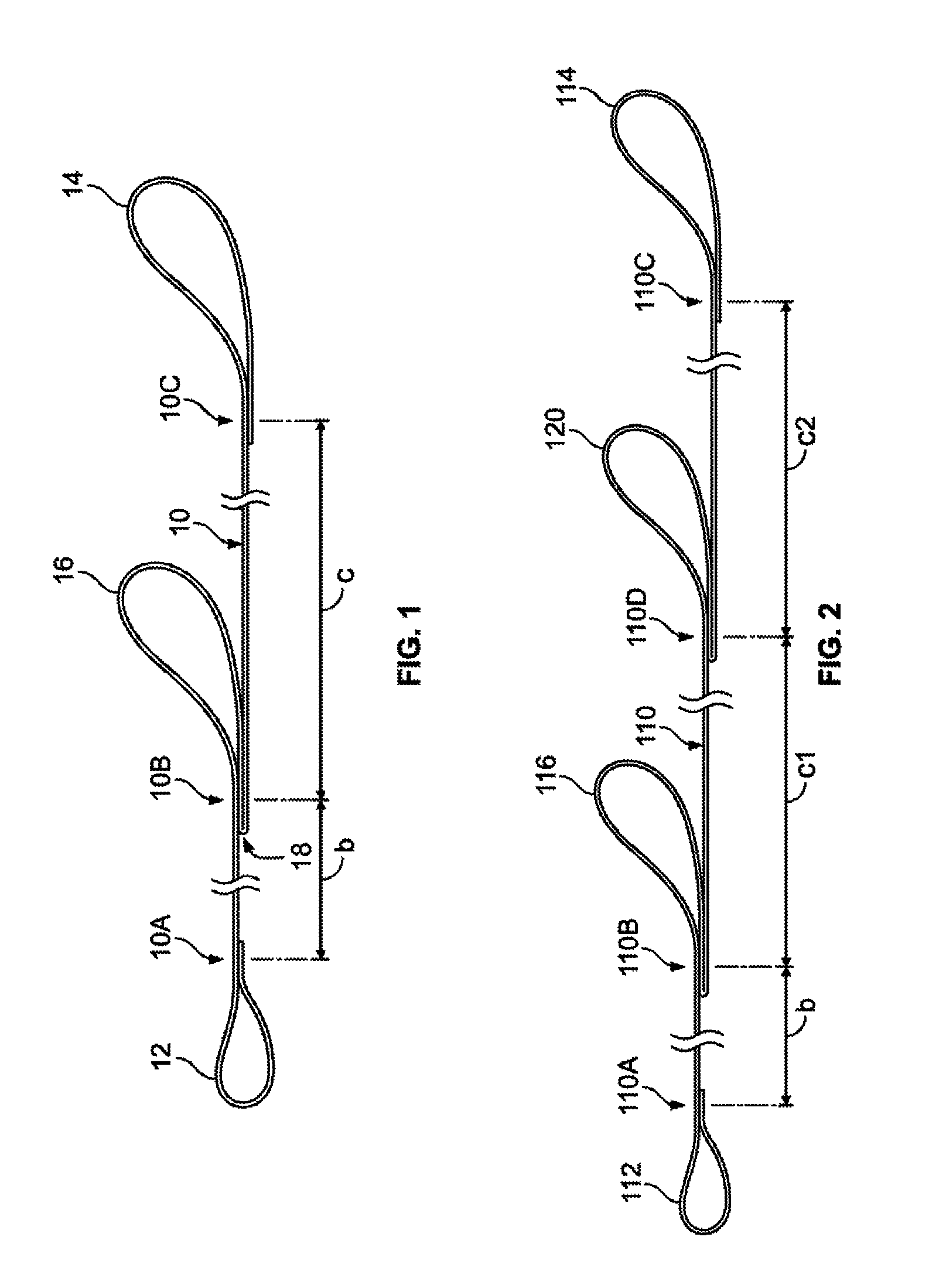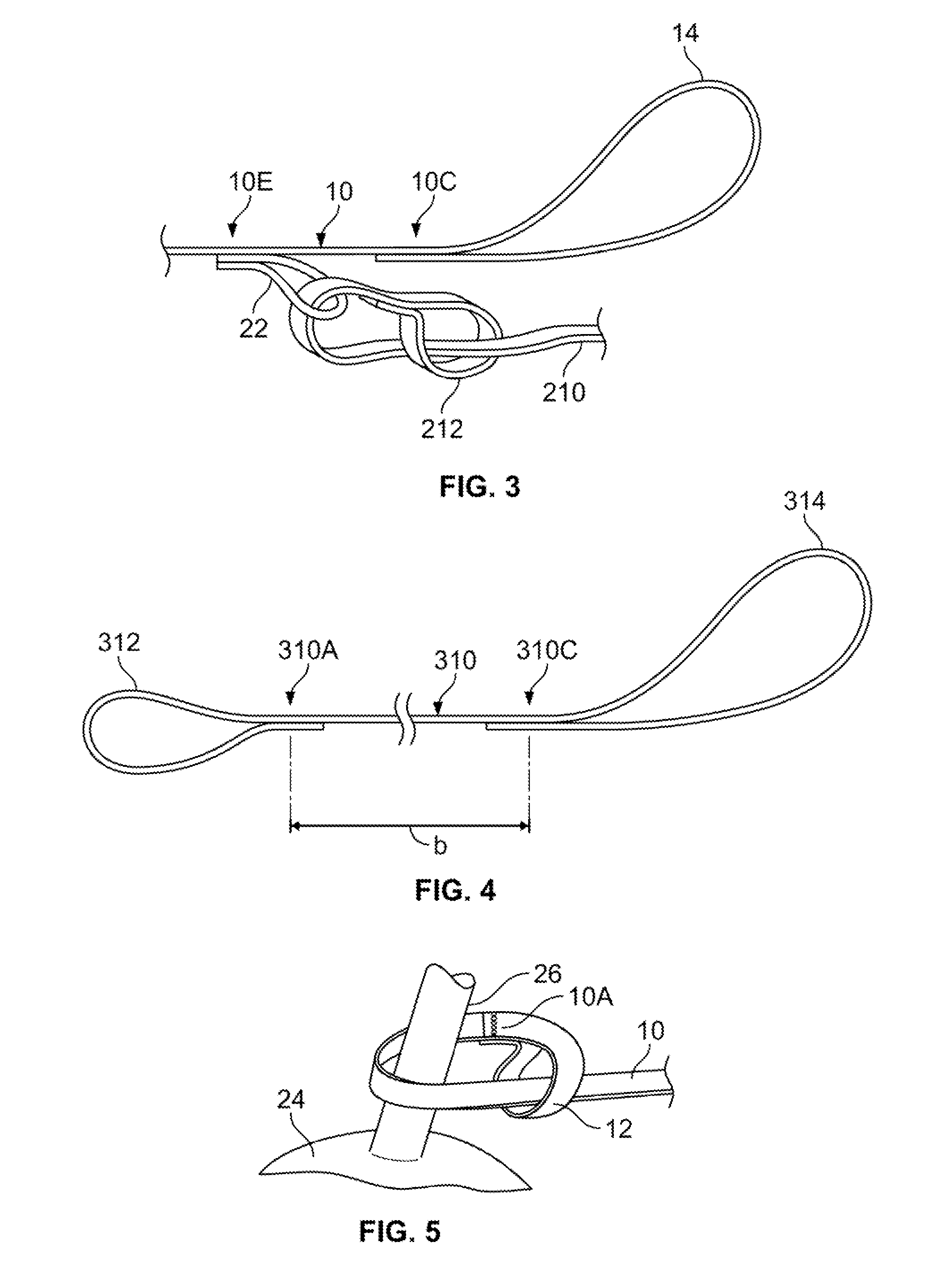Method and rig for dragging a fallen game animal
- Summary
- Abstract
- Description
- Claims
- Application Information
AI Technical Summary
Benefits of technology
Problems solved by technology
Method used
Image
Examples
Embodiment Construction
[0035]Referring to FIG. 1, the illustrated tether 10 is one of an identical pair that together form a rig. In this embodiment tether 10 is one continuous strap with its proximal end folded back and stitched at location 10A to form loop 12. Its distal end is also folded back and stitched at location 10C to form another, larger loop 14. The strap of tether 10 is gathered along its midsection to form another loop 16 that is then folded down to form bight 18. The resulting triple layer is stitched together at location 10B to fix loop 16 in place. Accordingly, tether 10 has two relatively larger loops 14 and 16 that are about the same size and can be used as a handholds, in a manner to be described presently.
[0036]While stitching was just described, in other embodiments the strap sections of tether 10 can be secured by rivets, staples, ferrules, glue, welding, nuts and bolts, or other fastening means. The strap of tether 10 can be webbing material that is knitted or woven from synthetic ...
PUM
 Login to View More
Login to View More Abstract
Description
Claims
Application Information
 Login to View More
Login to View More - R&D
- Intellectual Property
- Life Sciences
- Materials
- Tech Scout
- Unparalleled Data Quality
- Higher Quality Content
- 60% Fewer Hallucinations
Browse by: Latest US Patents, China's latest patents, Technical Efficacy Thesaurus, Application Domain, Technology Topic, Popular Technical Reports.
© 2025 PatSnap. All rights reserved.Legal|Privacy policy|Modern Slavery Act Transparency Statement|Sitemap|About US| Contact US: help@patsnap.com



